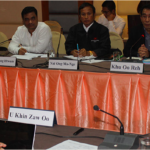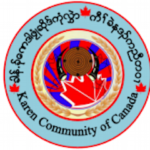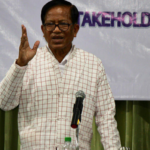Shan Herald Agency for News (SHAN) | August 28, 2017
Myanmar’s Peace Process: Disarmament, Demobilization and Reintegration, Borderland Economies, Service Delivery, and other Post-Panglong Concerns (Part I)
Editor’s Note: The following is the first part of a three part series to be featured on Tea Circle this week. Scroll down for for Myanmar’s Peace Process: Disarmament, Demobilization and Reintegration, Borderland Economies, Service Delivery, and other Post-Panglong Concerns (Part II).
Myanmar’s history is defined by violence between a relatively stable lowland Bamar core and a fragile non-Bamar highland periphery. The country hosts numerous ethnic armed organizations (EAOs) including the world’s longest-running separatist insurgency. Since independence in 1948, Myanmar has never met Weber’s minimalist definition of a state as the holder of the monopoly of the use of physical force within a given territory. Beginning from a low point in 1948, when Karen separatists were assembled on the outskirts of Rangoon, Myanmar’s army or Tatmadaw grew over the years into a formidable military force as it asserted central control over all lowland areas, pushing insurgents year-by-year into more inhospitable and state-resistant terrain.
The country’s “Panglong 21” Peace Process, which seeks to end 70 years of insurgency in the country’s borderlands, has been subjected to significant criticism, not least from the participants themselves. Of the 17 EAOs who have signed the National Ceasefire Agreement (NCA), in July 2017, eight formed a “Peace Process Steering Team” to evaluate the current NCA, referring to it as a “deviation from the path they had envisioned.” Other EAOs excluded from signing by the Tatmadaw, and still others who declined to participate, have come together under a bloc, the Federal Political Negotiation and Consultative Committee (FPNCC), led by the most powerful EAO in the country, the United Wa State Party, but the government refuses to negotiate with them collectively. A previous bloc, the United Nationalities Federal Council (UNFC), has, for all intents and purposes, fallen apart. Apparent from the process is the disconnect between the EAOs and the Tatmadaw in regard to sequencing: for example, EAOs want a political dialogue about the parameters of a federal state followed by security sector and constitutional reform, after which disarmament, demobilization and reintegration of ex-combatants (DDR) shall occur. Conversely, the Tatmadaw want DDR immediately, pressing for a disarmament prior to political negotiations. Each side has its own understanding of federalism that is, so far, incompatible with the other.
Let’s assume, however, that the Panglong 21 process continues: that the Tatmadaw and the EAOs eventually demonstrate realism and flexibility, and that an agreement on federalism leads to security sector and constitutional reforms that will serve as guarantors of future peace between the lowland Bamar state and its borderlands.
Far from being the closing of a chapter, such a success signifies the beginning of a more arduous and insecure process that will likely stretch across generations. It is only after federalism is agreed upon and peace agreements are signed that the process of DDR will likely begin amongst EAOs and other militias. This process is codified by the United Nations in the Operational Guide to the Integrated Disarmament, Demobilization and Reintegration Standards, based on an accumulation of complex and not-always-successful DDR experiences across the 1990s and early 2000s. DDR now stands as a fundamental part of modern peace processes it seeks to address “the post-conflict security problem that arises when ex-combatants are left without livelihoods or support networks, other than their former comrades, during the vital transition period from conflict to peace and development”. Combatants are disarmed, demobilized from armed structures, and are supported in their transition to roles in a licit peacetime economy through grants, job training, education, and so on. This process is important so that insurgents, stripped of their ideological justification for existence but still with their illicit funding streams, don’t simply become another organized criminal gang for lack of alternatives. Many— and in some contexts, the majority— of ex-combatants reintegrate spontaneously: the concern is those who do not.
In Myanmar, this reintegration process will involve: the disarming of people across economically and infrastructurally undeveloped and geographically remote areas of the state whose livelihood is fighting; the dismantling (or more likely, conversion) of numerous insurgent command structures and the ending of revenues generated by extra-legal taxation and other means; and, the absorption of inappropriately-skilled combatants into local economies, much of them subsistence, which are also making the transition from illicit to licit. Overall, this is the altering of structures of non-state actor government and governance across areas of the Union of Myanmar, and the imposition of the state, where the Union government has held no sway for generations, if at all.
Numbers:
An unknown number of insurgents exist in Myanmar. According to the Myanmar Peace Monitor, the largest EAO, the United Wa State Party, has around 30,000 fighters and an additional 30,000 reservists; the Kachin Independence organization has between 10,000 and 12,000, with other estimates as high as 20,000. The Restoration Council of Shan State/ Shan State Army South has 8,000 fighters; the Shan State Progress Party/ Shan State Army North, 8,000; the Ta’ang National Liberation Army, 6,000; the Karen National Liberation Army/ KNU, between 5,000 and 7,000; the National Democratic Alliance Army (Mongla), 3,000; the Arakan Army, 3,000; the Myanmar National Democratic Alliance Army (Kokang), 3,000, and so on. Numerous smaller insurgents, Karenni, Lahu, Mon, and Naga, exist. And then there are the Border Guard Forces (BGFs)- EAOs folded into the Tatmadaw command, of which the Democratic Kayin Benevolent Army, with 5,000 fighters, may be the largest. Other former EAOs that have converted to BGFs include the Myanmar National Democratic Alliance Army, which broke away from the above mentioned MNDAA to become a BGF. John Buchanan, in Militias in Myanmar, characterizes BGFs as a category of militia, of which there are hundreds—maybe thousands— of such groups, most allied with the Tatmadaw, although a few are allied to the KNU and KIA. That publication notes that Major General Maung Maung Ohn, then head of the Directorate of People’s Militias and Territorial Forces, reportedly estimated that the total strength of the militias, as of 2010, was over 80,000. The highest estimate thus far, from Min Zaw Oo, claims 180,000 militia members in 5,023 groups.
Combining the conservative estimates from Myanmar Peace Monitor which total roughly 85,000 fighters in the largest 20 or so groups, with the conservative figure of 80,000 militia members, gives us a minimum of 165,000 persons who make their living with guns and through such practices as extra legal taxation. This, of course, is an oversimplification; many will be part-time fighters, and may trade or farm, and many have family providing remittances from Thailand and further abroad. Many may also work within operations/logistics and administration in the more complex EAOs, UWSP in particular. But even such applied nuance will still leave a significant number of fighters with inapplicable skills to earn acceptable incomes, and engage in meaningful livelihoods, in peacetime.
Continued absorption of EAOs into BGFs / Tatmadaw:
We can anticipate that a minority of these fighters will continue to be relatively “demobilized” from their existing command structure and absorbed into Tatmadaw-affiliated border guard forces— groups that the Tatmadaw actually pays and equips (unlike Tatmadaw-affiliated militias who are allowed to raise their own funds, and who will become a law and order issue in any future peace). The BGF initiative is very much found within the tenets of DDR: the primary reason it doesn’t emerge in many other contexts, however, is that the military cannot afford the cost of maintaining such forces.
The Tatmadaw, however, is able to maintain its border guard forces as part of its “deep state” structure, and the further conversion of EAOs into BGFs will, to both it and the civilian government, be viewed as another pillar of support to the consolidated peace that may emerge from Panglong 21. But the KNU, KIA and UWSP will likely object, and given their sizes and territories, special accommodations may be reached for some type of “national guard” formation in their respective areas. A second, less plausible option would be to absorb these forces within new “Karen Rifles” and “Kachin Rifles” divisions of the Tatmadaw: something politically untenable for both the EAOs and the Tatmadaw. At present, it is unlikely that the Tatmadaw would accept any large number of insurgent fighters into the mainstream military, much less the officer class. They cannot do so and retain what to its leadership must be its defining Theravada Buddhist and Bamar characteristics, which many a Karen or Kachin or Wa likely refusing to accept a thoroughly Bamar officer class. With these challenges in mind, the most likely outcome is that a significant number of EAO fighters will need to undergo DDR processes if the promise of Panglong 21 is to be met.
Part Two of the series will explore the manner in which Disarmament, Demobilisation, and Reintegration strategies will unfold, especially within the context of Myanmar’s under-developed and illicit borderland economies.
Myanmar’s Peace Process: Disarmament, Demobilization and Reintegration, Borderland Economies, Service Delivery, and other Post-Panglong Concerns (Part II)
Editor’s Note: The following is the second part of a three part series to be featured on Tea Circle this week. You can find the first part of Myanmar’s Peace Process: Disarmament, Demobilization and Reintegration, Borderland Economies, Service Delivery, and other Post-Panglong Concerns here.
Disarmament:
The government of Myanmar possesses the capacity to undertake disarmament and demobilization processes. But what it is still theoretically building with EAOs is the trust necessary to engage in such a process. Despite this, the government is unlikely to go down the well-trod path many other states have travelled via the subcontracting of Disarmament and Demobilization processes to the United Nations Department of Peacekeeping Operations (DPKO) and other UN agencies that have expertise in such work. China’s acquiescence, however, matters here: elements of One Belt, One Road require the stability in Myanmar’s border with Yunnan, and this has been amply demonstrated by the involvement of special envoy Sun Guoxiang in the latest Panglong Meeting. It is unlikely that China would involve itself in disarmament and demobilization directly; a process under the auspices, not of the EU or DPKO, but of ASEAN, may be more palatable for them.
The disarmament aspect of DDR is a technically easy, time-bound process that only requires the will of each entity to engage with the other, under third party facilitation. This may involve insurgent entry into cantonments and dual-key weapons storage after a given peace process reaches a certain pre-defined milestone. The weapons initially handed over will likely be constituted in large part by “museum pieces”, while better functioning weaponry is held back in case Panglong 21 breaks down, or for sale. Implicit in such a process is the building up of state police forces in insurgent areas— often made up of ex-insurgents under state command— in a structure resembling BGFs, but more lightly armed.
Demobilization and Insurgent Economics:
Demobilization of insurgent forces is both a discharging of soldiers and dissolution of the insurgent command structure. In most DDR processes, within the time-bound framework that also encompasses disarmament, it is almost purely symbolic: soldiers in formation hand over their weapons on a parade ground in front of press and dignitaries, and are then “dismissed”, one last time, by a commanding officer. The pageantry implies they all go home after. This is disingenuous. Despite claims of demobilization or conversion, the structures nearly always remain, down to the grassroots level.
In less-organized EAOs, these structures are most apparent in financial flows generated by legal and illegal economic activities. Ex- All Burma Students Democratic Front rebel and former MPC director Aung Naing Oo estimated the size of the conflict economy in Myanmar’s borderlands at between US$20 billion and US$30 billion— and while conflict will stop, the raising of funds often does not. Many EAOs, namely those with longstanding ceasefires with the Tatmadaw, have built up lucrative portfolios constituting of real estate in Yangon and Mandalay, hotels, bus companies, and so on. These are generally in the hands of individual insurgents rather than a group as a whole. Extralegal taxation is the norm, with trade taxed at checkpoints, and businesses and even households taxed in many areas. Sometimes these taxes are used for legitimate ends within complex EAO structures providing services; other times, they are simply protection fees. Often, insurgents exploit natural resources to fund rebellion and charge others for the license to do so: in Myanmar, jadeite, rubies and timber are especially lucrative. Taxes on jadeite, for example, provided up to half of the KIA’s operating budget.
In border areas, the smuggling of untaxed goods also constitutes a norm, as does insurgent taxes on such goods. Vice is also a popular business, as is gambling, in Kokang and Mongla especially. This also doesn’t stop with a peace agreement, and military businesses also remain deeply involved in natural resource extraction in contested areas, which casts a shadow across Panglong 21. On the furthest end of the spectrum of illegality, select EAO and militia economies are constituted by drug cultivation and processing, namely heroin and methamphetamine. Indeed, some EAOs and militias operate as particularly well-armed criminal syndicates with a thin veneer of ideology masking economic rationales.
As mentioned elsewhere, some crime will be tolerated by the authorities, written off as the “price of peace”. A particularly negative example can be found in the experience of neighbouring Northeastern India, where Naga insurgents who rose up against the Indian state in the 1950s developed comprehensive extortion and protection rackets, and engaged in fratricidal wars—more so than they either fought the state or provided services. They and other insurgent groups in Assam, Manipur, and other areas of Northeast India, espouse ideologies to mask the economic rationales of their current activities, and they act as shadow security forces, “descending, despite high-sounding ideals and rhetoric, into a criminalized oligarchy.” The Indian state tolerates these behaviours in the insurgents it has treaties with and the groups it is still trying to negotiate with. Yet another example of tolerated criminality can be found in Indonesian Aceh, on the northern tip of Sumatra. There, the Free Aceh Movement (Gerakan Aceh Merdeka or GAM) fought the Government of Indonesia from 1976 until 2005, when a mediated peace process culminated in the Helsinki Memorandum of Understanding, followed by the 2006 Law on the Governing of Aceh. GAM disarmed and theoreticallydemobilized; the structure remained in place, with GAM veterans continuing to collect extra legal taxes from individuals and businesses across the province, as well as other organized criminal activities. This is implicitly allowed by the provincial government, with only GAM dissenters from the main GAM corpus declared “outlaws” and killed.
In Myanmar, peace will also offer lucrative protection opportunities for insurgent structures, especially regarding construction contracts in EAO areas. Improved roads and new businesses will mean more goods and services to tax. These structures will prove durable long after the peace process ends.
The government will initially lack both the capacity and the will to police ex-insurgents and militias, and the Tatmadaw will not do so either. On the contrary, rogue elements of the Tatmadaw within its regional command structure may engage in the same activities, forming new partnerships with EAOs and militias and continuing existing ones.
Ultimately this will be important for a future when the Tatmadaw itself contracts, firstly through its Border Guard Forces. Its affiliated militias, which the Tatmadaw does not finance, will present more immediate law and order problems.
Drug Eradication and Alternative Livelihoods:
As in Afghanistan, chaos and statelessness in Shan and other areas of Myanmar engenders drug production. A key element of DDR is the halting of principal insurgent funding streams, and in select (but not all, the KNU, for example, historically executes drug traffickers) EAO and militia areas, this means opium poppy cultivation and heroin/methamphetamine production. The primary way in which this should be undertaken is the ramped-up targeting of grassroots opium poppy cultivators through alternative livelihoods programs, which UNODC and partners have implemented for years through introduction of alternative crops and agricultural extension services. If the alternative livelihood process occurs in a cautious manner, then a period of crop introduction and extension services will occur prior to opium poppy field eradication and law enforcement. Drug treatment programs will follow this process: many poppy cultivators are also addicts.
This can result in much economic distress to poppy-cultivators: In “The United Wa State Party: Narco-Army or Ethnic Nationalist Party?”, Tom Kramer notes that, when the UWSP leadership were indicted by the US Department of Justice for drug production in 2005, they launched eradication efforts on their own accord, and this resulted in widespread declines in household incomes, as well as small-scale famine. As opium was the only cash crop in the area, and hardly any other edible crop was grown, farmers didn’t have the ability to purchase rice and other staples. However, a future alternative livelihood process may be less economically painful for these poor households. If it were a seller’s market, no alternate crop would equal the value a farmer can earn from opium, but this may not be the case in Myanmar: the last UNODC Southeast Asia Opium Report indicates a fall in the opium purchase price which may result from market consolidation. Initial successes in alternative livelihoods might result in buyers offering higher prices, which could eliminate licit gains made in a non-coercive manner. Other administrations have also taken crop substitution initiatives, in Kokang especially, with sugarcane supplanting poppy grown there.
A better-funded—and for communities, less beneficial—“alternative livelihoods” model has been pursued by private businesses which are opening rubber and other plantations, and paying local labourers pittances. This exploitative capitalism, disguised as beneficial to former opium cultivators, can lead to exactly the type of instability that more traditional alternative livelihoods programs seek to avoid.
Individual Combatant Reintegration:
The reintegration element of DDR is likely to be seen by Myanmar and China as less politically sensitive. It is also the aspect of the triage that disarmament and demobilization practitioners avoid, as it is often sub-contracted to the UN sister agency or at the NGO level. The United Nations Development Programme (UNDP), the International Labour Organisation (ILO), and the International Organization for Migration (IOM) are key reintegration implementers, but this does not mean they have been uniformly successful in past endeavors. Reintegration of ex-combatants from insurgent groups into civilian life is not time-bound, and is fraught with difficulty, if not failure. When insurgencies end, there often isn’t enough work for civilians, much less fighters, as insurgent areas are distinguished by a lack of infrastructure and undeveloped licit markets. The majority of the economy is illicit, with significant organized criminal activity, as EAOs are regularly excluded from licit markets unless, in the example of the UWSP and others, they control a large enough territory. Most civilians in such areas are engaged in subsistence agriculture or, to a lesser extent, petty trading. There is often also a lack of health and education services, although this was not the case historically in KIA, KNU, and then-Communist Party of Burma (CPB) territories.
When it comes to the type of work available to ex-combatants, there is also the issue of pride. Having a weapon taken away, as a soldier, can be a traumatic experience. The work one can do in civilian life when one fought previously cannot just be any work. It has to have meaning. We cannot expect people who have killed and suffered for a cause to become subsistence farmers on their own land, much less land that is not their own, or bicycle-riding vegetable sellers— especially when previously, in addition to fighting, they acted in a tax-collecting capacity (or what in peacetime is referred to as conducting a protection racket) and when the old insurgent structure still exists for them to return to. This is why the recidivism rate amongst select ex-combatants to violence and crime is high, and why after millions of dollars in reintegration programming in other contexts, only a minority of ex-combatants identified as problematic by their own structure are engaged in licit work (as a direct result of a program, be it a job training or grant) after five years.
Reintegration of individual combatants will consist of job training, apprenticeships, support to small businesses, and remedial/vocational and technical education. It will be proven that the rural economies of EAO areas do not have the capacity to absorb large numbers of fighters into roles other than subsistence ones. The leadership class of insurgents, on the other hand, will become local politicians and construction contractors for the myriad projects that the union and the Tatmadaw will launch, and non-competitive contracts will likely be awarded to them by the government in order for them to feel that peace is profitable. Such leaders will be able to provide for much less of their rank and file than they would have before the peace. One-time reinsertion payments for demobilized soldiers will be spent quickly, and demands for pensions may follow. A particularly expensive example can be found in Timor-Leste, where disgruntled insurgents from the 1975-1999 conflict acted as the foot soldiers for a 2006 insurrection; since then the government has prioritized veteran’s pensions in order to maintain stability, and has committed to paying off select veterans and their descendants through 2122.
The Union of Myanmar cannot afford this. And so a certain amount of illegal activity will continue to be committed by the non- integrated rank and file. Extortion and other crimes are often tolerated by the state and the EAO authorities as the price of peace. And so the future peace, for select EAO host populations, might be a cold one, with some insurgents shorn of their ideological justification continuing to feed on communities, whilst other ex-combatants face the disappointment of local economies that cannot accommodate their peacetime ambitions.
Reintegration, crop substitution, extension services, and other livelihood programs are not only for ex-combatants and opium poppy cultivators. The morass of internally displaced within Myanmar and refugees from Myanmar in Thailand will require not just resettlement but an economic role and livelihood source. The UNHCR and other agencies estimate nearly 100,000 internally displaced in Kachin and northern Shan, and roughly 400,000 in the Karen and Mon areas of the southeast. The government will likely prioritize formerly armed populations for reintegration and livelihoods programming, and will neglect returnees, because in the cynical but pragmatic calculus of authorities, they pose less of a threat.
Part Three of the series will discuss other aspects of state building in insurgent areas, service delivery and migration in particular, followed by a comparative discussion of state building in formerly insurgent areas of Northwest Thailand in previous decades.
Myanmar’s Peace Process: Disarmament, Demobilization and Reintegration, Borderland Economies, Service Delivery, and other Post-Panglong Concerns (Part III)
Editor’s Note: Today’s post if the third and final of a series on Tea Circle. You can find the first and second parts of Myanmar’s Peace Process: Disarmament, Demobilization and Reintegration, Borderland Economies, Service Delivery, and other Post-Panglong Concerns here.
DDR processes are only one aspect of the state building process that will need to occur in EAO areas; durable peace will only arrive when communities in EAO areas discern value in citizenship, and so a distrusted state must deliver health, education, and other services, and offer impartial protections, including the provision of land tenure. Education is particularly important: successful reintegration and enhanced livelihood security in EAO areas are fundamentally a question of human resources, the foundation of which is public schools. Across Myanmar, the educational system is in need of repair, and this is doubly so in many EAO areas. Education is supposed to create citizens as well as workers literate in a common language. A lack of vocational and technical training centers, not only in areas accessible to EAO populations, but in Myanmar as a whole, is also an urgent issue. These matters warrant much greater exploration— exploration that is beyond the scope of this analysis, however. Afghanistan amply demonstrates how both DDR and alternative livelihood programs fail when they are standalone programs occurring in areas lacking the administrative, service-oriented, and coercive presence of the state.
The process of state building in insurgent areas will occur through an inflow of Bamar civil servants into these areas to deliver services, and this will also lead to resentment. As a rule of thumb, many EAO host populations will not possess the requisite human resource capacity to completely staff education, health, and general administrative posts. Business and capital, some of it exploitative, will follow. Migrants historically dominate local markets in newly colonized areas; Chinese already play this role in Kachin, while Naga markets in Northeast India are dominated by Marwaris and Biharis, and Han Chinese in Tibet. This can also cynically play into conflict resolution efforts, if it gives struggling ex-EAOs entities to levy extra legal taxes on.
Myanmar’s ethnic minorities—and for that matter, China’s Tibetans, Indonesia’s highland Papuans, Thailand’s hill tribes, and others—know that uncontrolled in-migration will reduce them to minorities, with their cultures and lands subsumed by newcomers. James C Scott’s engulfment— defined as the settlement of loyal (read: docile) populations with an existing “national” identity in areas where such identity was lacking among indigenous peoples— may occur as a part of an unstated but overarching government strategy to dilute the concentration of peoples with separatist tendencies in sensitive areas. Rich historical precedents exist, such as Manchu/ Qing settlement of Han Chinese colonists and soldiers in Southwest China:
Han settlement into areas where they are not a majority has been a Chinese government policy that transcends types of rule, and its continuity from empire to republic to communist dictatorship to the present appears unbroken. Significantly, however, the greater the disruption of the previous demographic status quo, the greater the volatility, as is demonstrated by contemporary anti-state violence in Xinjiang and unrest in Tibet. Controls on migration will likely be sticking points in future negotiations, between the Union and the KIA, KNU, MNDAA, NDAA, and UWSP in particular.
Lessons from Thailand:
The future settlement of conflicts in Myanmar’s EAO borderlands, either through Panglong or another forum, cannot be predicted, but the contours of a long path can be inferred from the recent experience of Northwestern Thailand, which only became integrated into the modern Thai state beginning in the 1960s. While Afghanistan’s experience demonstrates how reintegration and alternative livelihoods standalone programs not synchronized within a larger state-building and service delivery exercise can often prove futile, Northwestern Thailand’s integration into the Thai state confirms this. The region’s hill tribe regions were developmentally and administratively ignored until the Communist Party of Thailand (CPT) based itself there: hill tribe members served as CPT foot soldiers, and the exponential increase in poppy cultivation in hill tribe areas made many Thais perceive them as threats to the state. The government’s defeat of the CPT involved coaxing CPT members to surrender, but unlike Myanmar, the Thai state’s relatively strong position made the process a simpler one than the current context of EAO areas. In Thailand’s opium-growing strongholds, much of them in then-CPT areas, poppy cultivation dropped from 12,112 hectares in 1961 to 281 hectares in 2015, and the opium trade shifted almost entirely to Laos and Myanmar.
The historical success of Northwestern Thailand’s incorporation into the state through both counterinsurgency and alternative development in formerly insurgent areas is not attributed to any one factor, but to a combination of many. Opium poppy cultivation there was not halted because substitute crops earned the same income as opium. In the Thai case, nothing equaled the price of opium to smallholder farmers, especially those without land tenure and the consequent inability to invest in longer-term crops: in 1984, 15 years after alternative crops and extension services were introduced, cultivation was again peaking, and the Thai authorities introduced forcible eradication and arrests in response. But alternate crops did provide income, especially through Arabica coffee. Despite the interference of middlemen and exploitative contract farming— problems for farmers across Thailand and Myanmar, not simply in opium cultivation areas— farmers did earn a living. But the end of illegality was aided by much more than new crops and price guarantees, and the presence of state security actors. The means by which this once remote area of Thailand was truly integrated into the state was through the provision of health and education services, the extension of roads, the provision of land tenure, and the assignment of civil servants to administer areas they were previously absent from— both the presence of the state, and people’s perceptions that its presence was worthwhile.
This success took generations. Myanmar’s will as well: if Panglong 21 is a success, then it will only be because it serves as the foundation upon which services and protections for EAO communities are built. If Panglong 21 is the end of a process, rather than a beginning, then it will fail.
Conclusion:
The negotiated assertion of the power of the lowland state into state-resistant areas continues with the Panglong 21 peace process. Myanmar’s borderland insurgents have replicated lowland state coercive power in order to fight the state. The egalitarianism discussed by Scott and others mainly exists in those armed communities which continue to resist the state, as they form and fracture over time. Many of these insurgents historically protected their communities from Tatmadaw incursions distinguished by violence, flight and impunity. Like states, they also tax and control the communities they protect. Many have resorted to criminal activities to survive, and also, profit.
EAO communities have been caught between a rock and a hard place. Panglong 21 offers them a chance to be relieved of the pervasive insecurity and occasional violence they have been subject to for generations. It offers many of those who represent them less: what we witness in the insurgent offensives that began in Shan in November 2016 may be the last gasp of certain smaller groups and the beginning of serious negotiations between larger entities and the government. That process will see EAOs surrender some powers while retaining others: outlaws will legitimize, and a certain amount of post-conflict criminality from former militia and EAO structures will be tolerated as the price of peace. The peace process, if it works, will not be the end of an era of instability, but rather, the beginning of a different type of insecurity, and expectations must be managed. Transitional justice and other demands will prove to be illusory.
No one should underestimate the long task ahead of both the government and the insurgents; it will take a generation, at least, before insurgent populations will find a place in licit economies, and before adequate services are provided. No particular program or step serves as a “magic bullet”. The same infrastructure that will allow troops to travel quickly to quell unrest will also serve to reduce costs for farmers to get their produce to market and reduce times for people to access emergency care. That access, to name one example of many, gives people a vested interest in the state. And in many an EAO territory, that interest is lacking. It is exactly this type of social capital that the state needs to invest in EAO areas that will guarantee peace after Panglong. The state’s presence will be measured not in terms of soldiers but by health, education, markets and opportunities.






